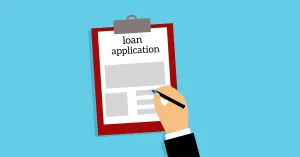Here at the Rules of Thumb blog from MoneyThumb, we spend a lot of time talking about private lending. Today we'd like to share with our reader some facts about peer-to-peer lending and explain exactly how it works for your education.
1. Who Does P2P Lending Help?
P2P lending uses technology to connect individuals who are willing to lend their surplus to businesses and individuals in need of cheap and fast loans. It is trying to bridge this credit gap by offering access to low-cost and quick finance to meet your personal or business needs.
P2P lending can be a boon for you, especially if you are:
- New to credit or have limited financial records
- Medium or small business owner
- Women borrower
2. How Can P2P Lending Help Borrowers?
There are multiple reasons why P2P lending can help you get credit when you need it the most and at terms that suit you.
- Unsecured loan products: If you are already reeling under a mortgage or other financial pressures, providing collateral to take a loan may not be feasible. P2P lending offers collateral-free loans that could help you manage your liquidity without putting strain on your assets.
- Analytics enabled credit assessment: The credit evaluation algorithm uses new-age data points evaluated across more than 120 parameters. Thus, it’s more efficient with higher accuracy such that even those with limited credit and financial history get a just chance to get risk assessed.
- Low-cost loans: As borrowers and lenders directly interact with each other, the monthly installments (EMIs) received goes directly to the lender and the P2P platform does not keep any margins. Technology-driven operations reduce the cost of underwriting and other overheads for the platform, leading to lower-than-market processing fees. These factors reduce the cost of the loan for the borrower.
- Convenient and quick loans: When you need a quick loan, P2P lending is a good option. P2P platforms have seamless, online processes that ensure faster turnaround time. Even during the pandemic-induced lockdown, when bank visits were not possible, P2P lending’s online, contactless operations ensured continuous access to credit for those in need.
- Customized products to cater to your specific needs: By using analytics and new-age data points such as digital footprints of borrowers, P2P lending has been able to create customized products that cater to various occupations, gender, demographics, etc.
So, whether you need a personal loan for your wedding expenses or to meet the working capital shortage in your business, P2P lending could be the solution.
- Higher ability to take a risk: If you are one of those borrowers, who could be considered high risk, the chances of you getting credit from traditional financial institutions is negligible. However, free from a banking legacy, driven by young entrepreneurs and lenders with a bigger risk appetite, P2P lending could be an option for you.
3. Is P2P Lending For Creditworthy Borrowers?
While it is true that P2P lending platforms attract borrowers that are unable to access credit from banks and other financial institutions, it also helps quality borrowers.
Lending by banks is non-inclusive, high on cost, and governed by fears of rising non-performing assets (NPAs). The rise of alternative financial models like P2P lending can help you get a better deal.
So, if you are a creditworthy borrower being wooed by banks and FIs, evaluate P2P lending before finalizing what option to go with. Quick, low-cost loan offerings from P2P lending platforms have charmed creditworthy borrowers away from traditional sources, more so in recent times.
Bottom Line
Today, alternative lending models like P2P lending are providing a far more efficient and effective means for you to access credit quickly and at a low cost.
This is due to various factors. These include:
- The rise in fintech adoption rates.
- A much younger, smart-phone flaunting population comfortable with online transactions
- Borrowers are more willing to shop outside of banks and other traditional financial institutions for the sake of convenience and access to low-cost loan products.
- Liquidity crisis and credit paucity, which have created greater acceptance for digital lending and borrowing.
- Need for contactless financial service providers, especially post Covid-19.
- Improved access to high-quality data from multiple credible sources.





















Add comment